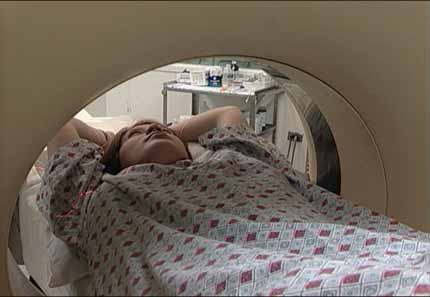Headache
A headache is pain in the head or upper neck. They may be primary (not associated with a medical condition) or secondary (caused by an injury or medical condition). Primary headaches include tension, migraine and cluster headaches. Most headaches are not indicative of a serious medical problem. However, you should seek medical attention if it is severe or unusual, does not respond to treatment and worsens over time, frequently recurs or is accompanied by injury, seizures, vomiting or fever or by changes in speech, vision or behavior.
Your doctor may order head MRI, head CT or lumbar puncture to help diagnose and evaluate your condition. If your headache does not have a serious underlying cause, your doctor may try to identify headache "triggers," such as stress or certain foods, and recommend preventive medication, lifestyle changes or pain relievers to manage your symptoms.
What is a headache?
A headache is pain in the head or upper neck. The two major types of headaches are primary headaches, which are not associated with a medical condition or disease, and secondary headaches, which are caused by an injury or underlying illness, such as a concussion, bleeding in the brain, an infection or a brain tumor.
Primary headaches include tension, migraine and cluster headaches.
Symptoms of a tension headache include pressure and a band-like tightness that begins in the back of the head and upper neck, and gradually encircles the head.
Cluster headaches are headaches that occur in groups, or clusters, over a period of several weeks or months separated by headache-free periods of months or years. During the headache period, the cluster headache sufferer experiences several episodes of pain during the day, each of which lasts 30 to 90 minutes. These attacks, which often occur at the same time of day, include sharp, penetrating pain around or behind one eye, watering of the eye and a stuffy nose.
Migraine headaches cause intense, throbbing pain, often on one side of the head. Nausea, vomiting and sensitivity to light, sound and exertion often accompany migraines, which can last several hours or up to three days. Some migraine sufferers experience a visual disturbance called an aura prior to the onset of the migraine. Auras are flashing lights, wavy lines, blurry vision or blind spots.
Most headaches are not indicative of a serious medical problem. Some people have occasional headaches that resolve quickly, while others experience frequent and debilitating pain. You should seek medical attention if your headache:
- is severe. If you believe it is your "worst headache ever," seek emergency medical care.
- is different from your usual headaches in terms of its location, severity or accompanying symptoms, such as numbness or vision loss
- starts suddenly, or is aggravated by exertion
- causes pain significant enough to wake you from sleep
- does not respond to treatment, and instead worsens over time
- recurs frequently
- is accompanied by any of the following:
- a head injury that involves a loss of consciousness, even for a few seconds
- seizures or convulsions
- recurrent vomiting
- dizziness and impaired balance
- fever or stiff neck
- changes in speech, vision or behavior.
How are headaches diagnosed and evaluated?
To diagnose the cause of headaches and to rule out underlying medical conditions, physicians obtain a patient history and conduct a careful neurological examination. Diagnostic testing may include the following imaging tests:
- CT imaging of the head: Computed tomography (CT) scanning combines special x-ray equipment with sophisticated computers to produce multiple images or pictures of the inside of the body. Physicians use CT of the brain to detect bleeding caused by a ruptured or leaking aneurysm, stroke, brain tumors and diseases or malformations of the skull. CT angiography (CTA) may be performed. In CTA, a contrast material may be injected intravenously and images are obtained of the cerebral blood vessels.
- MRI of the head: Magnetic resonance imaging (MRI) uses a powerful magnetic field, radio frequency pulses and a computer to produce detailed pictures of organs, soft tissues, bone and virtually all other internal body structures. Physicians use MRI of the brain to examine the anatomy of the brain and to assist in the diagnosis of tumors, developmental abnormalities, blood vessel problems (such as an aneurysm), disorders of the eyes and the inner ear, stroke, disease involving the pituitary gland and certain chronic disorders of the nervous system, such as multiple sclerosis. A congenital condition called a Chiari malformation, which can produce headaches, can be easily diagnosed with MRI.
- Lumbar puncture (also called a spinal tap): This diagnostic test involves removing and analyzing a small amount of cerebrospinal fluid—the fluid that surrounds the brain and spinal cord — from the lumbar (or lower) region of the spinal column. Physicians use a lumbar puncture to help diagnose infections, including meningitis (infection of the membranes covering the brain) and encephalitis (infection of the brain itself), inflammatory conditions of the nervous system, including Guillain-Barre syndrome and multiple sclerosis, bleeding around the brain (subarachnoid hemorrhage), and cancers involving the brain and spinal cord.
- CT Angiography: If your doctor suspects you may have an aneurysm, you may undergo CT Angiography.
How are headaches treated?
Provided one of the serious conditions noted above is not present, relatively simple treatment options can be considered. To treat symptoms and prevent the frequency and severity of headaches, physicians may try to identify headache (particularly migraine) "triggers," such as stress or certain foods, and recommend treatment options including:
- preventive medications and treatments.
- lifestyle changes, including stress management and relaxation techniques.
- pain-relieving medication, such as acetaminophen or ibuprofen. Children and adolescents should avoid taking aspirin. In rare cases, aspirin can cause Reye Syndrome, a serious and potentially fatal condition.
If your headache is the result of an underlying medical condition or injury, your physician will discuss treatment options with you.
Which test, procedure or treatment is best for me?
This page was reviewed on March 25, 2024



